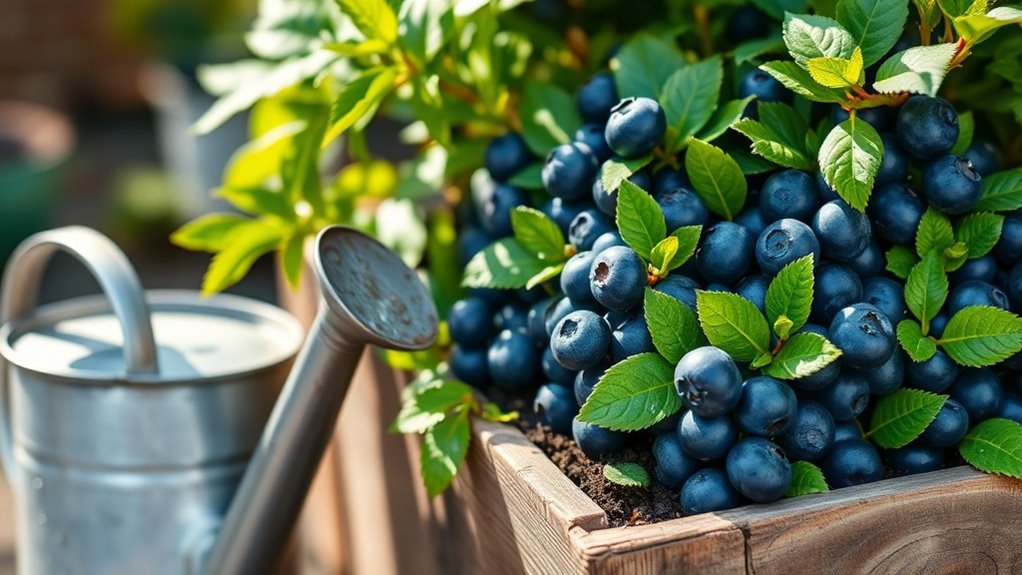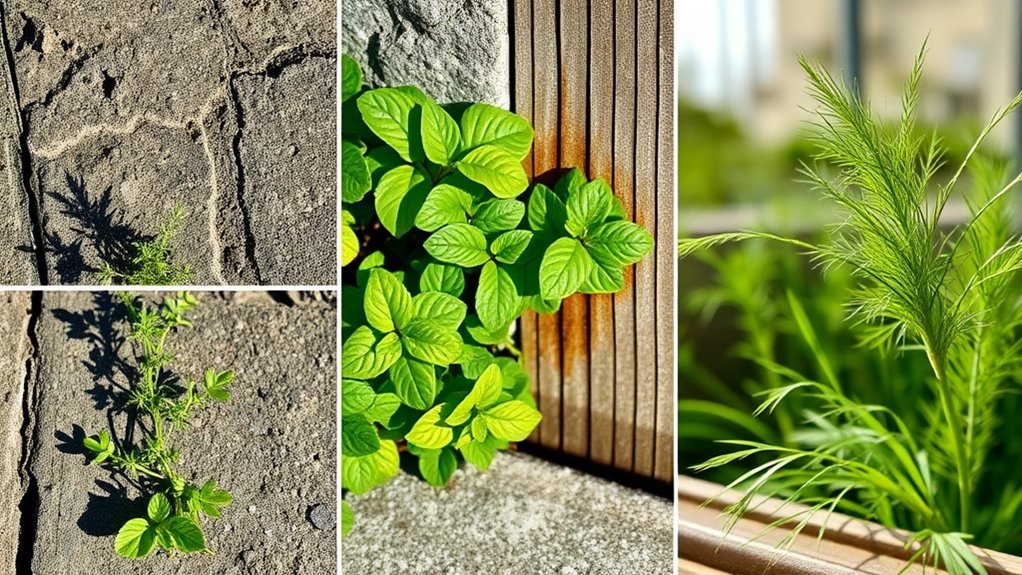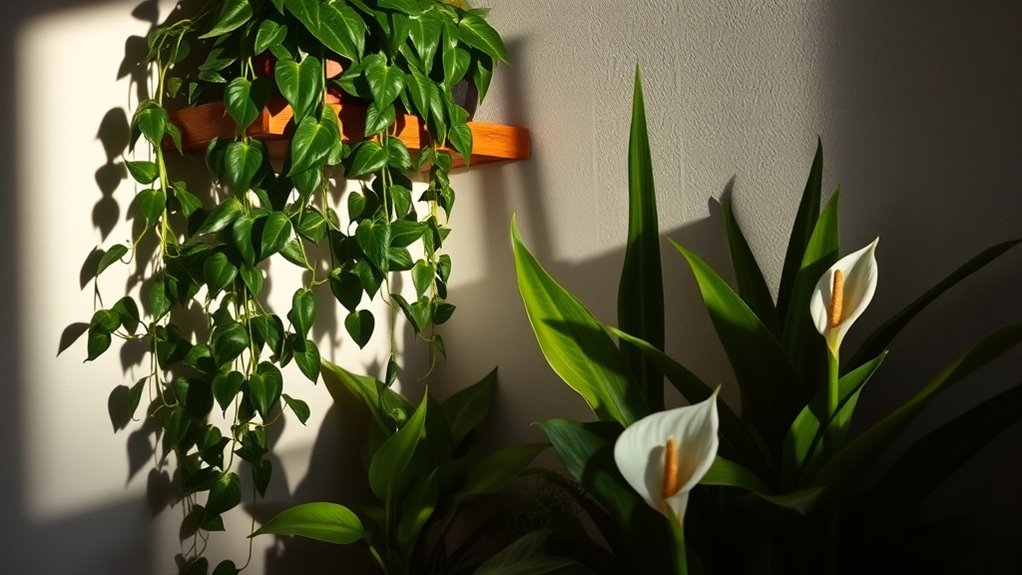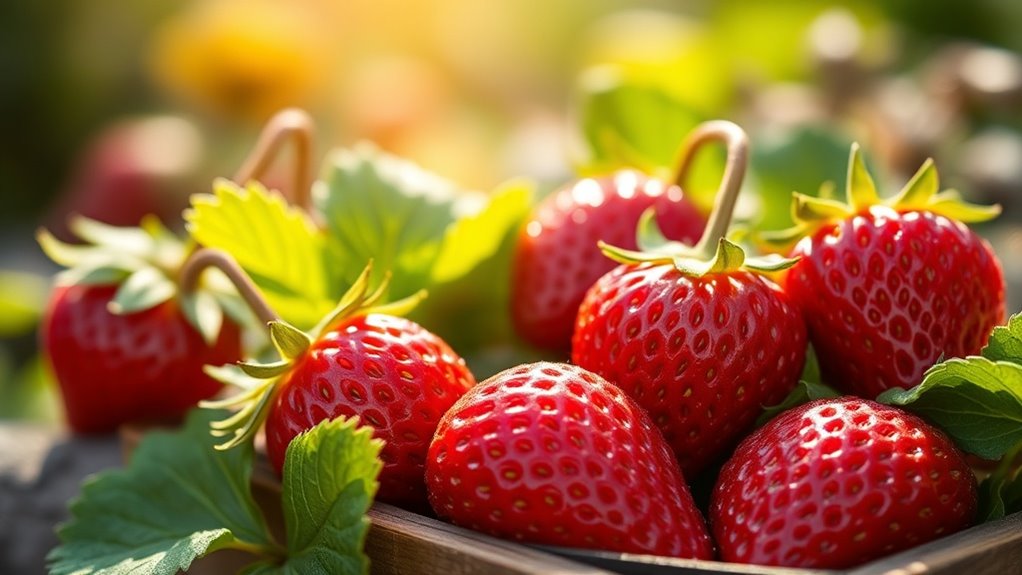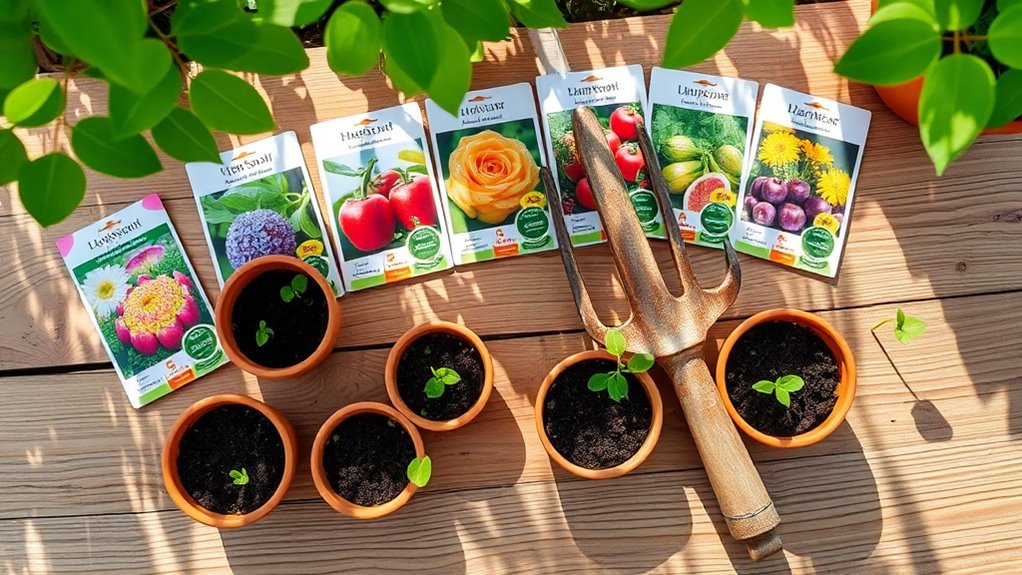How to Grow Blueberries in Containers
Growing blueberries in containers is an effective way to enjoy fresh fruit without needing a large garden space. Start by choosing the right dwarf varieties suited for container life, since they adapt well to limited root space. Next, selecting an appropriate pot and preparing the correct potting mix are crucial steps. Understanding how to care for your plants, including watering and fertilizing, will significantly affect your success. Let’s explore these essential steps further.
Choosing the Right Blueberry Varieties
When it comes to choosing the right blueberry varieties for container gardening, you should focus on selecting cultivars that thrive in limited space and complement each other for better fruit production.
Ideal container blueberries include ‘Top Hat’, ‘Sunshine Blue’, and ‘Peach Sorbet’.
These dwarf varieties are compact, self-pollinating, and deliver abundant yields, making them perfect for successful container blueberries growing.
Selecting the Ideal Container
Choosing the right blueberry varieties sets the foundation for successful container gardening, but the containers themselves play a significant role in plant health and yield.
Opt for containers that are at least 5 gallons in size to ensure adequate root space. Ensure they’ve drainage holes to prevent waterlogging, and consider lightweight materials like plastic or resin for easy mobility and insulation against temperature fluctuations. Additionally, it’s important to select ideal potting conditions that will foster healthy growth for your blueberries.
Preparing the Perfect Potting Mix
A well-balanced potting mix is crucial for thriving blueberries in containers.
To create the ideal blend, combine the following components:
- Erosion-resistant peat moss*: Provides essential acidity and *moisture retention.
- Perlite or vermiculite: Enhances aeration and drainage for healthy root development.
- Organic compost: Supplies nutrients and beneficial microorganisms that support growth.
Additionally, incorporating essential soil ingredients into your potting mix will help ensure your blueberries flourish in their container environment.
Planting Blueberries in Containers
Planting blueberries in containers requires careful attention to depth and spacing to ensure optimal growth.
Choose a container at least 12 inches deep to accommodate the root system. Space plants about 18 inches apart to allow for air circulation.
Position the blueberry plant at the same depth it was growing in its nursery container, and gently backfill with your prepared potting mix.
Watering and Fertilizing for Healthy Growth
To ensure blueberries thrive in containers, it’s essential to establish a consistent watering and fertilizing routine.
Follow these guidelines:
-
Water your blueberries deeply once or twice a week, ensuring soil is consistently moist but not soggy.
-
Use a balanced, slow-release fertilizer, applying it in early spring and again in mid-summer.
-
Mulch around the base to retain moisture and regulate temperature.
Managing Pests and Diseases in Container Blueberries
Managing pests and diseases in container blueberries is vital for a successful harvest and healthy plants.
Regularly inspect your plants for signs of aphids, spider mites, and powdery mildew.
Use insecticidal soap or neem oil for pests and ensure good airflow to prevent fungal issues.
Implement proper sanitation by removing fallen leaves and debris to reduce disease risk, ensuring your blueberries thrive. Additionally, consider using vinegar as a natural option for garden pest control, as it can deter certain pests without harming your plants.

